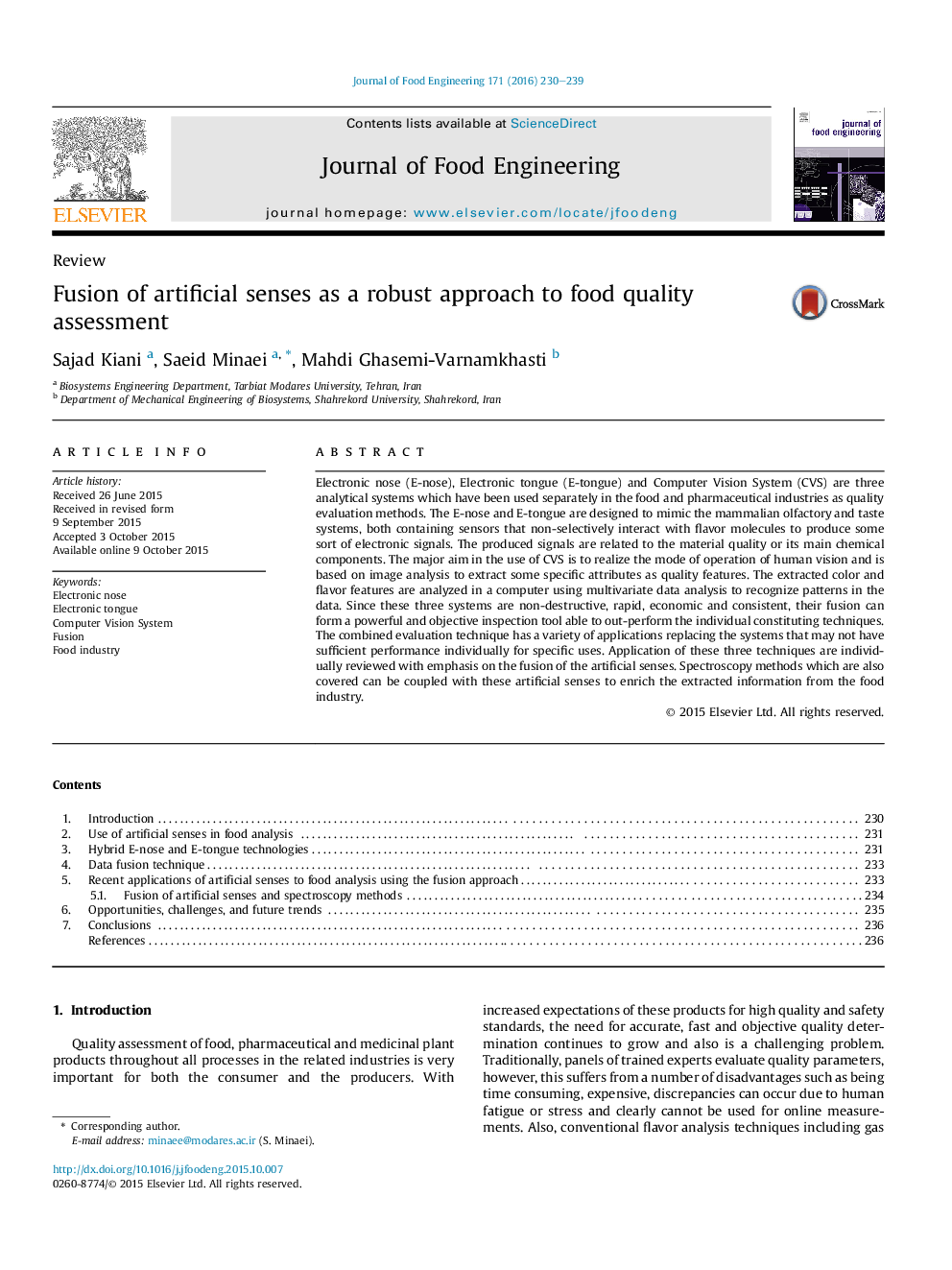| Article ID | Journal | Published Year | Pages | File Type |
|---|---|---|---|---|
| 222802 | Journal of Food Engineering | 2016 | 10 Pages |
•Artificial senses are designed to mimic some of the mammalian sensing systems.•Data fusion techniques can be used to combine data from multiple sensors.•Fusion systems can improve the performance of food quality evaluation methods.
Electronic nose (E-nose), Electronic tongue (E-tongue) and Computer Vision System (CVS) are three analytical systems which have been used separately in the food and pharmaceutical industries as quality evaluation methods. The E-nose and E-tongue are designed to mimic the mammalian olfactory and taste systems, both containing sensors that non-selectively interact with flavor molecules to produce some sort of electronic signals. The produced signals are related to the material quality or its main chemical components. The major aim in the use of CVS is to realize the mode of operation of human vision and is based on image analysis to extract some specific attributes as quality features. The extracted color and flavor features are analyzed in a computer using multivariate data analysis to recognize patterns in the data. Since these three systems are non-destructive, rapid, economic and consistent, their fusion can form a powerful and objective inspection tool able to out-perform the individual constituting techniques. The combined evaluation technique has a variety of applications replacing the systems that may not have sufficient performance individually for specific uses. Application of these three techniques are individually reviewed with emphasis on the fusion of the artificial senses. Spectroscopy methods which are also covered can be coupled with these artificial senses to enrich the extracted information from the food industry.
